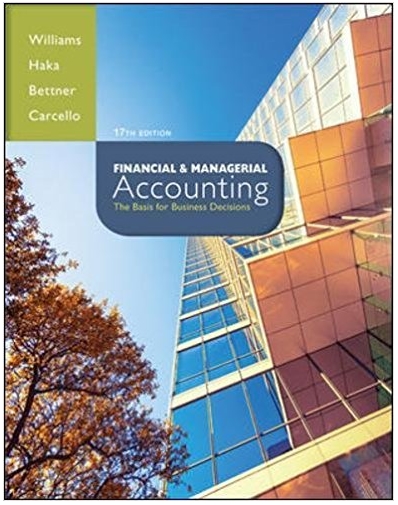Early in 2011, Laird Industries was formed with authorization to issue 150,000 shares of $20 par value
Question:
During its first five years of business (2011 through 2015), the company earned income totaling $3,800,000 and paid dividends of 60 cents per share each year on the common stock outstanding.
On January 2, 2013, the company purchased 1,000 shares of its own common stock in the open market for $40,000. On January 2, 2015, it reissued 600 shares of this treasury stock for $30,000.
The remaining 400 shares were still held in treasury at December 31, 2015.
Instructions
a. Prepare the stockholders' equity section of the balance sheet at December 31, 2015. Include a supporting schedule showing (1) your computation of any paid-in capital on treasury stock and (2) retained earnings at the balance sheet date.
b. As of December 31, 2015, compute the company's book value per share of common stock.
c. At December 31, 2015, shares of the company's common stock were trading at $56. Explain what would have happened to the market price per share had the company split its stock 2-for-1 at this date. Also explain what would have happened to the par value of the common stock and to the number of common shares outstanding.
Common Stock
Common stock is an equity component that represents the worth of stock owned by the shareholders of the company. The common stock represents the par value of the shares outstanding at a balance sheet date. Public companies can trade their stocks on... Balance Sheet
Balance sheet is a statement of the financial position of a business that list all the assets, liabilities, and owner’s equity and shareholder’s equity at a particular point of time. A balance sheet is also called as a “statement of financial... Dividend
A dividend is a distribution of a portion of company’s earnings, decided and managed by the company’s board of directors, and paid to the shareholders. Dividends are given on the shares. It is a token reward paid to the shareholders for their... Par Value
Par value is the face value of a bond. Par value is important for a bond or fixed-income instrument because it determines its maturity value as well as the dollar value of coupon payments. The market price of a bond may be above or below par,...
Fantastic news! We've Found the answer you've been seeking!
Step by Step Answer:
Related Book For 

Financial and Managerial Accounting the basis for business decisions
ISBN: 978-0078025778
17th edition
Authors: Jan Williams, Susan Haka, Mark Bettner, Joseph Carcello
Question Posted:





